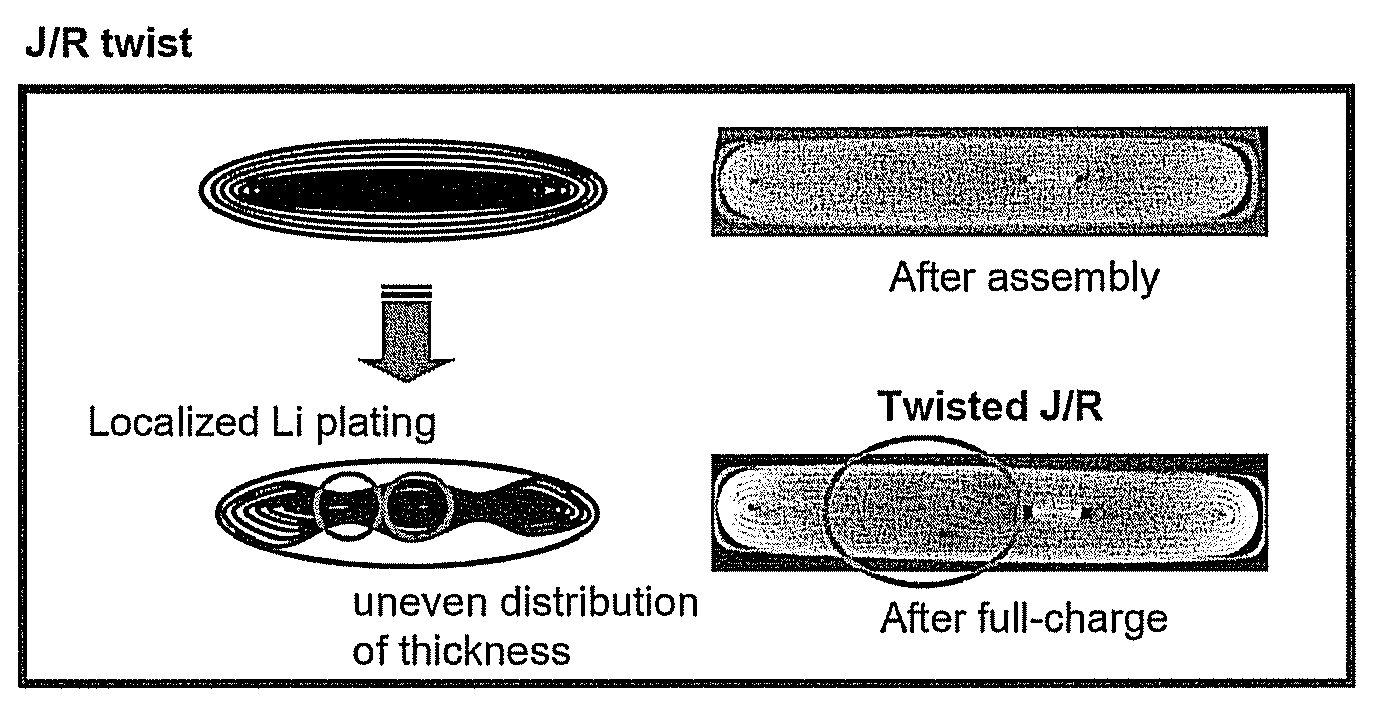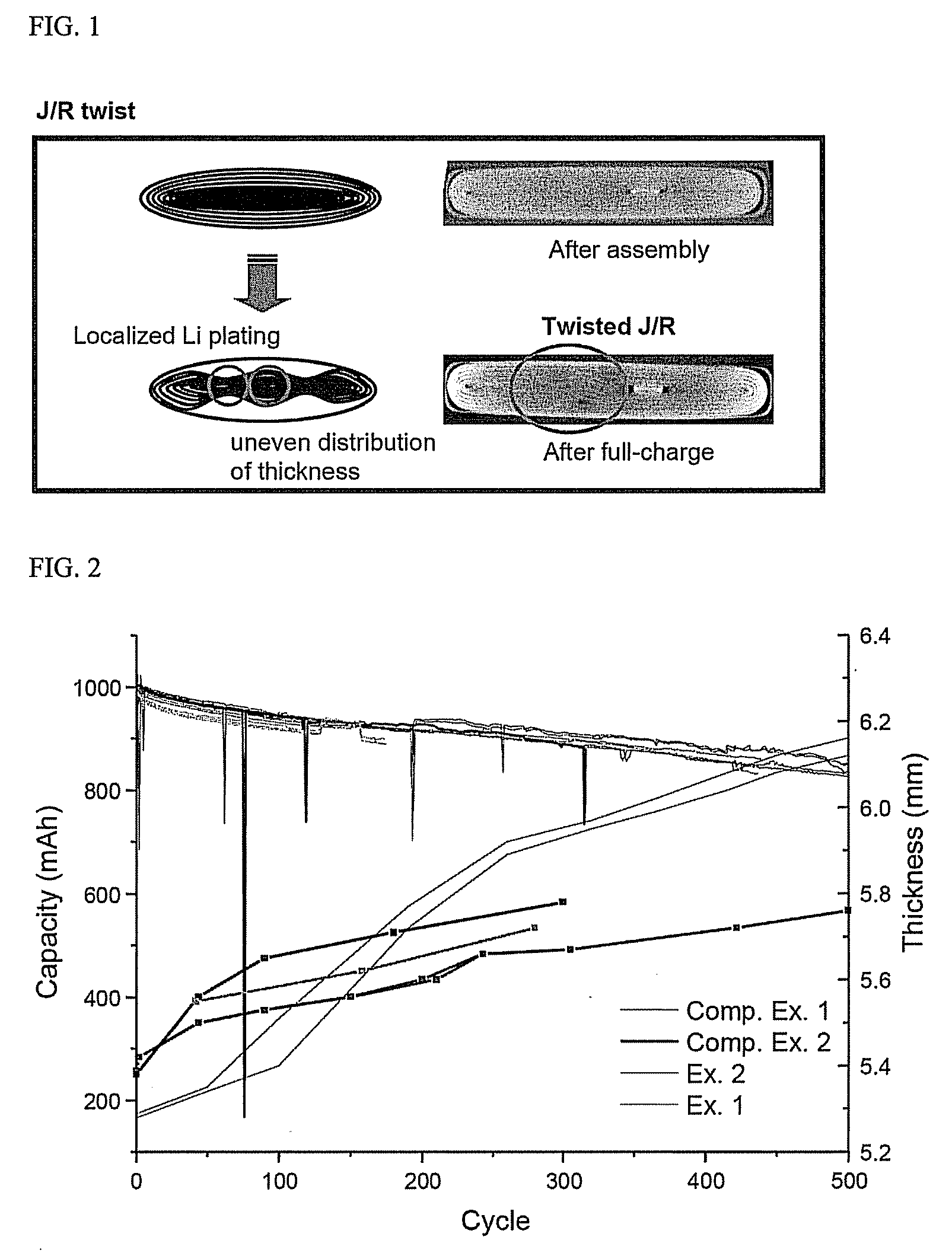Gel-typed polymer electrolyte containing diacryl amide-based polymeric material and electrochemical device comprising the same
- Summary
- Abstract
- Description
- Claims
- Application Information
AI Technical Summary
Benefits of technology
Problems solved by technology
Method used
Image
Examples
example 1
Preparation of Non-Aqueous Electrolyte Containing Lithium Salt
[0072]1M LiPF6 was added to a non-aqueous electrolyte solvent composed of a mixture of ethylene carbonate (EC), ethylmethyl carbonate (EMC) and diethyl carbonate (DEC) (4:3:3, w / w). Based on the weight of the electrolyte, 1.5% by weight of vinylene carbonate (VC), 0.5% by weight of propylene sulfone (PS), 2 mol % of AIBN as a polymerization initiator, and 2% by weight of ethylene diacrylamide represented by Formula 3 hereinbefore were added to the resulting mixture to thereby prepare a non-aqueous electrolyte.
Fabrication of Cathode
[0073]Using LiCoO2 as a cathode active material, a cathode slurry was prepared by adding a cathode mix composed of 95.4% by weight of LiCoO2 having a particle diameter of 18 μm, 1.6% by weight of Super-P (conductive material) and 3% by weight of PVDF (binder) to NMP (N-methyl-2-pyrrolidone) as a solvent. Thereafter, the resulting cathode slurry was coated on an aluminum current collector to ther...
example 2
[0076]A secondary battery was fabricated in the same manner as in Example 1, except that piperazine diacrylamide of Formula II and polyethylene glycol diacrylate (Mn=700, Aldrich) were added in an amount of 2% by weight, instead of ethylene diacrylamide.
experimental example 1
[0079]Batteries fabricated in Examples 1 and 2 and Comparative Examples 1 and 2 were charged to 4.2 V at a charge rate of IC, 50 mA (cut off), and discharged to 3 V (cut off) at a discharge rate of IC. These charge / discharge cycles were repeated 500 times at room temperature. Meanwhile, for checking the capacity of the batteries, the fabricated batteries were aged for 5 days at room temperature after fabrication thereof. Immediately after the examination of battery capacity, cycle tests were carried out.
[0080]Changes in the charge capacity and battery thickness for 300 to 500 cycles were measured, respectively. The thus-obtained results are shown in FIG. 2.
[0081]As shown in FIG. 2, it can be seen that even though they are gel polymer battery systems, the batteries according to the present invention (Examples 1 and 2) exhibit a capacity almost comparable to that of lithium-ion secondary battery (Comparative Example 2) which corresponds to a liquid electrolyte battery system of a conv...
PUM
 Login to View More
Login to View More Abstract
Description
Claims
Application Information
 Login to View More
Login to View More - R&D
- Intellectual Property
- Life Sciences
- Materials
- Tech Scout
- Unparalleled Data Quality
- Higher Quality Content
- 60% Fewer Hallucinations
Browse by: Latest US Patents, China's latest patents, Technical Efficacy Thesaurus, Application Domain, Technology Topic, Popular Technical Reports.
© 2025 PatSnap. All rights reserved.Legal|Privacy policy|Modern Slavery Act Transparency Statement|Sitemap|About US| Contact US: help@patsnap.com



